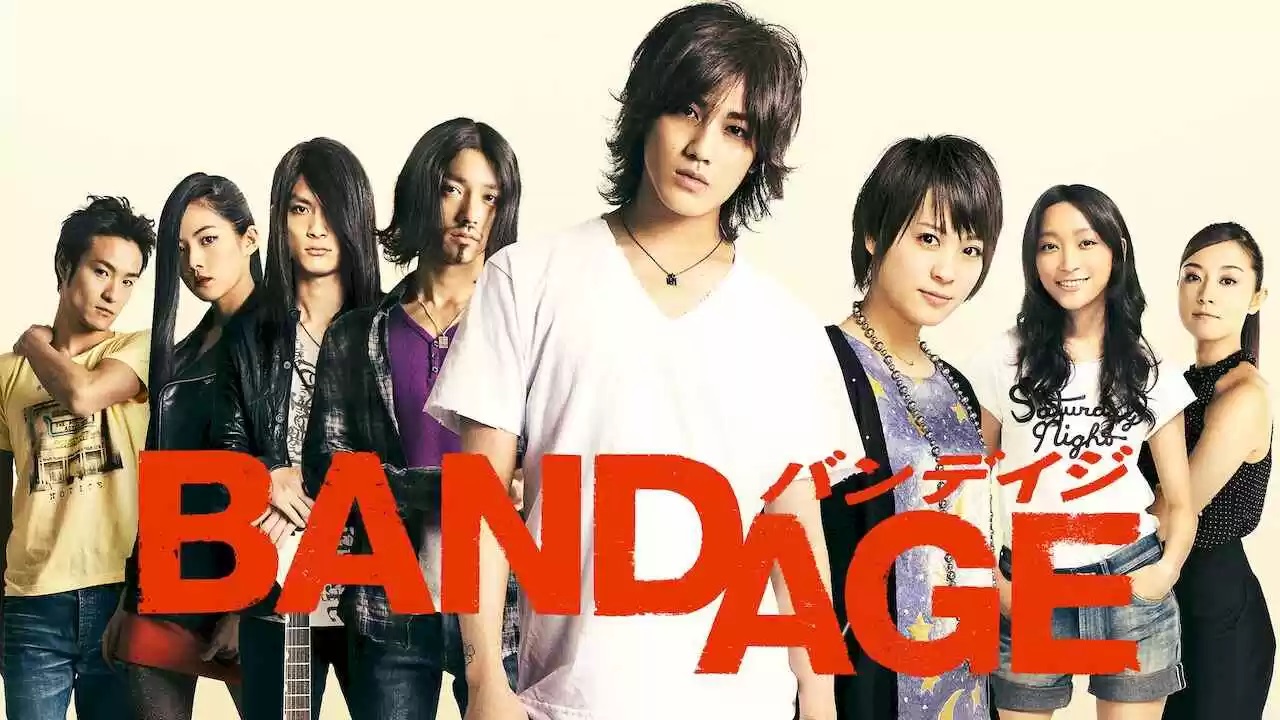We often hear that the Japanese people are a people apart. That ideology, education, their way of being, their morals, beyond our understanding. Maybe cinema could be a good way to break through this rather hermetic culture. Watch, discover. Eventually understand that these rules that we were taught in school, namelyintroduction, intrigue and setting up the end are non-existent in Japanese stories. It is not a question of giving meaning, morality. To impose on us a path destined to take us somewhere, but to explore a fact that is happening in the present. Like many Indian films, the situation, setting, characters, even space, are detailed to the extreme, leaving the plot to unfold in the background. As if this plot was only the result of all the external elements surrounding it. The person watching a Japanese movie for the first time might still feel frustrated. To have missed something essential. The surface is very linear. We are aware that a whole universe is hidden under all its layers, often delusional and incomprehensible. But what universe is it? So, either we move on to a more concrete cinema, which chews up all the work, or the concept of making up our own mind leads us to see other Japanese films. Here are three Japanese films that touched us and that comprehensively describe some of the aspects of Japanese culture.
Bandage

The story
Asako managed to sneak into the backstage of her favorite band. She meets Natsu. Almost documentary film, which explains the vagaries of the world of music through the pop-rock band LANDS. Stories of arguments, love, questioning.
Technical fact sheet
Director : Takeshi Kobayashi Screenplay: Shunji Iwai, Chika Kan Genre: Drama, music, romance Duration: 1h59 Year: January 16, 2010 Cast: Jin Akanishi, Kii Kitano, Kengo Kora https://www.youtube.com/watch?v=8ySnf3q3nLU
Impressions
Directed by music producer Takeshi Kobayashi, this film doesn't really have a story. Set in the 1990s of a Japan where the rise and fall of bands was a common practice because of "talent TV shows", we witness, almost like through the keyhole, the frantic and not always assumed race to success. These are life sequences, especially of the tortured life of Natsu, leader of the group LANDS. Asako enters his life and his style of music changes. This greatly disturbs the rest of the group but, it is too late, he can only suffer these feelings. Natsu's mind rocks. Apparently drunk throughout the film (not always easy to determine if their crazy way of acting is the result of a psychotropic drug, alcohol, or if it is simply a genre), interprets the role of a rock singer, well, neo-rock / alternative more exactly. A dark character living in his own world. He will rise from the ashes and become the magnificent being fled deep inside. Jin Akanishi, who gives Natsu a rather clueless and fragile personality, is touched by his interpretation of the "Akira… Shock" (Nobtuta wo Produce). Bandage is a description, an atmosphere, and Jin Akanishi, with his voice, his look, his dimension, his style, gives himself the mood, strength and charisma necessary to carry the film. The soundtrack is wonderful. The editing, an indiscreet camera. Jin Akanishi, a real pleasure to see and listen to.
Death Note

The story
Light Yagami, a law student, finds a notebook belonging to a Shinigami (Personification of Death in Japan). Reading the instructions, he discovers that anyone whose name is written in this notebook will die. Initially skeptical, he quickly learned to use it. Dreaming of a better world, he begins to eliminate all the criminals one by one. Little by little he will use it for his own purposes. Recognized by the world as Kira, he becomes the main suspect in the investigation of L, the best detective in the world.
Technical fact sheet
Director : Shūsuke Kaneko Screenplay: Tsugumi Ôba & Takeshi Obata (manga), Tetsuya Oishi (film) Release date: Japan, June 17, 2006 Cast: Tatsuya Fujiwara, Ken'ichi Matsuyama, Toda Erika
Impressions
Death Note was not very successful in Japan. It is true that it is difficult to adhere to cartoon characters transformed into "real" people. And then it's always very delicate to make an adaptation. Charles M. Schulz, the creator of Charlie Brown, once recounted that when his characters started on television, he received a letter from a little boy telling him that on the comic, Charlie did not have the same voice. It is very difficult to capture the essence of the original creation because it will always depend on the perspective you are looking at. This Shinigami who only eats apples and wants to have fun. L, crouched on his couch eating sweets non-stop… the film still keeps this delirious side worthy of Boris Vian. The real mixes with the fantastic as if both were part of the same dimension. If one can't resist the temptation to compare the movie and anime, you could say that the movie feels more punchy and dark. Despite this fantastic background, it is so realistic that we manage to enter this parallel world, we are kidnapped and the film becomes a chilling reality.
Still the water

The story
On Amami Island, Japan, locals live in harmony with nature. A tragedy happens when a corpse is found in the sea. Kaito is deeply scarred, while her friend, Kyoko, faces the last days of her mother, who is seriously ill. They will accept the idea of life and death, while discovering love and their budding sexuality together. (Wikipedia)
Technical fact sheet
Director and Screenplay: Naomi Kawase Released: 2014 Cast: Nijirō Murakami, Jun Yoshinaga
Impressions
Naomi Kawase, known in particular for her documentaries (the Arte channel France co-produced three) presents us, as usual, an intimate and poetic film that transports us to one of the aspects of Japanese society. The island, the stories, the landscapes, the water… But the most important thing is the family nucleus. Manners, everyday life. The director favors the setting more than the plot and sometimes, it feels like a Miyasaki film. Still the water was filmed in the scenic wilderness of Amami City, Amami Ōshima, in Kagoshima Prefecture, Japan in 2013. Through her indiscreet camera, Naomi Kawase manages to capture the atmosphere of the island, traditions. She draws a parallel between the unleashing of the sea and the emerging sexuality of the two teenagers. And then a mother dies. Her husband lowers his bed to the living room and places it in front of the front door so she can see the outside. Trees. The villagers come to sing with her. For her. This song, Shimauta, is beautiful and could have inspired the story of the film. Or at least, gasoline. When the flower of the deigo begins to bloom, the great winds rise. When the flower of the deigo blooms, the storm comes. Then, storm and sadness cross the island. Song of the island, ride on the wind with the birds and travel the distance of the mothers to bring this message. https://www.youtube.com/watch?v=xsUKiMfNG4c The director shows us once again, her ability to talk to us about a subject without encumbering it with heaviness, making it wild and unpretentious. Throughout the film, we are in this island, we bathe in this forbidden sea. We are transported, with skill, into his universe.















![[Live Report] Rock En Seine 2024 : 20 ans et toujours aussi passionnés !](https://www.justfocus.fr/wp-content/uploads/2024/11/RES24_JOUR01_LANA-DEL-REY_LOUIS-COMAR-12.jpg)




















![[Interview] Rencontre avec les enchanteurs de Black Lilys à Paris](https://www.justfocus.fr/wp-content/uploads/2018/04/Black-Lilys72.jpg)
